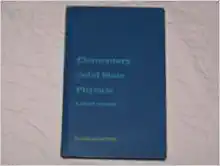xi. An object which repels a balloon (balloon E) which is repelled by a positively-charged balloon (balloon F). xii. An object around which the electric field vector is directed inwards. xiii. An object around which the electric field vector is directed outwards. 3. Consider the following statements given below and determine if the charge of Object A is: a. positive b. negative c. neutral Description of Charging Method a, b, or c? i. Object A is charged by friction using animal fur. Animal fur has a greater electron affinity than object A. ii. Object A is charged by contact using a negatively charged object. iii. Object A is charged by induction using a positively charged object. iv. Object A is used to charge an aluminum plate by the method of induction. The aluminum plate acquires a positive charge. v. Object A is used to charge an aluminum plate by the method of induction. The aluminum plate acquires a negative charge. vi. A rubber rod has a greater electron affinity than animal fur. The rubber rod is charged by friction with animal fur. The rubber rod is then used to charge Object A by the method of contact. vii. A rubber rod has a greater electron affinity than animal fur. The rubber rod is charged by friction with animal fur. The rubber rod is then used to charge Object A by the method of induction. viii. A rubber rod has a greater electron affinity than animal fur. The rubber rod is charged by friction with animal fur. The rubber rod is then used to charge an aluminum pop can by the process of induction. The pop can is then contacted to object A. 4. A neutral plastic strip is rubbed with cotton and acquires a positive charge. Which of the following statements are true of the positively-charged strip? a It lost some electrons to the cotton during the charging process. b. It lost all of its electrons to the cotton during the charging process. c. It has the opposite charge as the cotton. d. It would now be repelled by the piece of cotton which was used to charge it. e. It gained protons during the rubbing process. f. As a material, plastic has a greater affinity for electrons than cotton. The Physics Classroom 2022 essibility: Investigate







